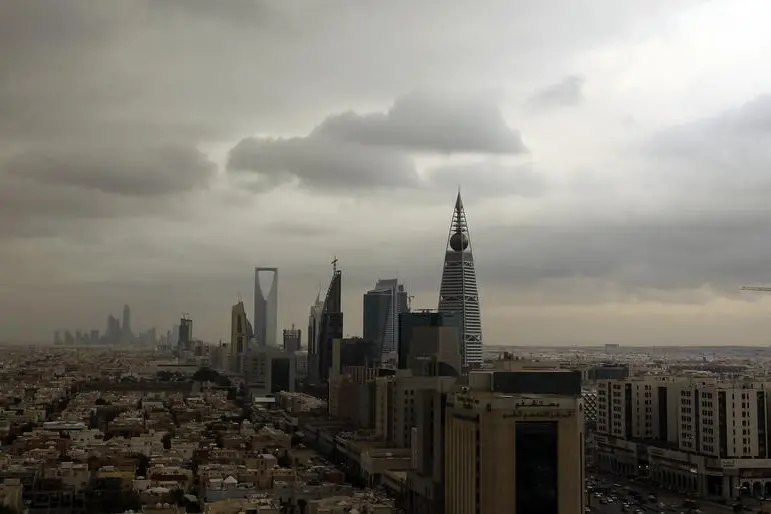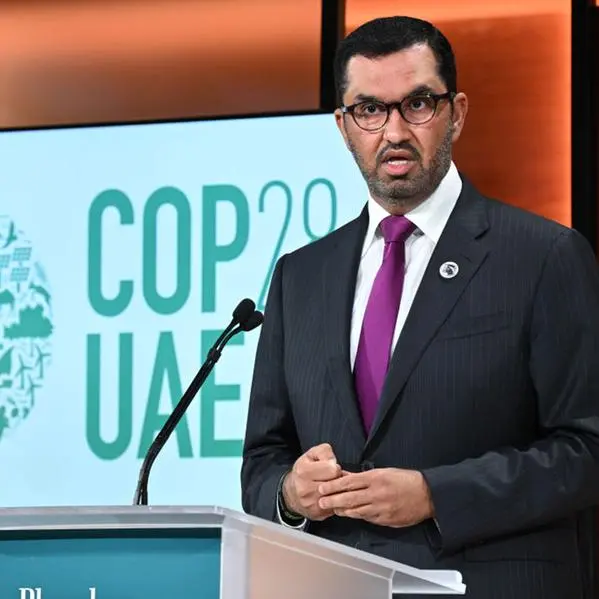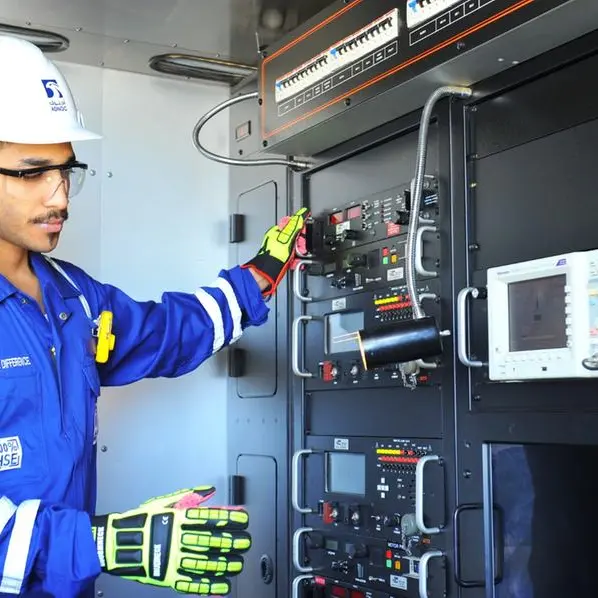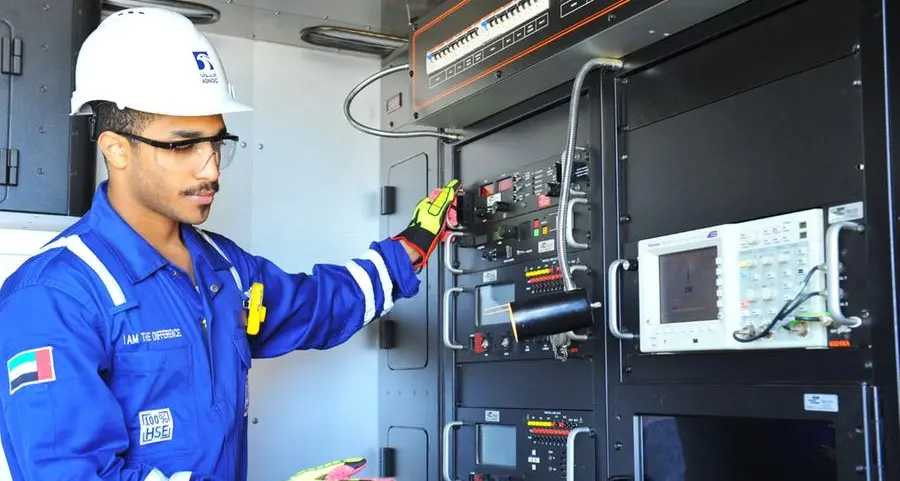PHOTO
While the pace of development across Saudi Arabia is likely to slow in the face of lower oil prices, the economy will continue to expand, driving continued growth in the real estate sector, says Jamil Ghaznawi,national director and country head-KSA of Jones Lang LaSalle (JLL).
Asked about the talk that the Saudi real estate market bubble is about to burst, Ghaznawi told Arab News in an interview: "We do not expect a dramatic burst or major price correction. The level of economic activity is one of the major drivers or any real estate market."
He added: "We do not expect that the bubble will burst as there are still other significant drivers in the market such as local population growth, and increased religious and local tourism."
While the pace of development across Saudi Arabia is likely to slow in the face of lower oil prices, the economy will continue to expand, driving continued growth in the real estate sector, says Jamil Ghaznawi, national director and country head-KSA of JLL.
Asked about the talk that the Saudi real estate market bubble is about to burst, Ghaznawi told Arab News in an interview: "We do not expect a dramatic burst or major price correction. The level of economic activity is one of the major drivers or any real estate market."
He added: "We do not expect that the bubble will burst as there are still other significant drivers in the market such as local population growth, and increased religious and local tourism."
These are highlights of the interview:
Q: Firstly, can you please give us a brief on JLL in KSA and its main business lines?
A: Across the Middle East, North and Sub-Saharan Africa, JLL is a leading player in the real estate market and hospitality advisory services.
The firm has worked in 35 Middle Eastern and African countries and has advised clients on real estate, hospitality and infrastructure projects worth over $1 trillion in gross development value.
JLL MENA employs more than 220 internationally qualified professionals embracing 30 different nationalities across its offices in Riyadh, Jeddah, Dubai, Abu Dhabi and Cairo. Combined with the neighboring offices in Casablanca, Istanbul, Johannesburg, Lagos and Nairobi, the firm employs more than 600 professionals and provides comprehensive services in the wider Middle East and African (MEA) region.
Q: What are currently the main directions for Saudi real estate according to your research; in other words, which real estate line is the most active?
A: The residential sector is by far the biggest in all cities in Saudi Arabia.
Outside of this, the level of construction varies between cities.
In Jeddah, the office and hospitality markets are seeing more construction.
The retail and office sectors are experiencing the most activity in terms of construction in Riyadh.
Q: There are some local reports, which indicate that villa prices have decreased after the Kingdom's status correction campaign for illegal immigrants; what is your view on this?
A: Recent changes to the mortgage law have had more impact on the price of villas than the expulsion of illegal immigrants as this group does not constitute a major component of demand for villas for sale (as they tend to rent rather than purchase property).
During the campaign, a large number of laborers were deported which in turn created a shortage, raising the cost of hiring them.
This caused an increase in the cost of developing villas and thus adding upward pressure on villa prices, not decreasing them.
Q: According to your last report, current opportunities exist in the residential and retail sectors. What are you expectations for the hospitality and office sectors in the immediate future?
A: Currently, there is a large supply of office space and hotels under construction in Riyadh and Jeddah.
As the projects are completed, the market will need time to absorb the new supply, which may lower occupancies and lease rates/ADRs in the short term.
Q: What is the average price of residential apartments in the main cities in Saudi Arabia?
A: The average price of new apartments in the projects that we monitor currently stands at SR4,600/sqm in Jeddah and SR3,200 as of Q1 2015 in Riyadh.
There are many older apartments available in both cities at somewhat lower prices.
Q: Shortages in the labor force represents one of the main challenges faced by real estate projects in the Kingdom, do you see Custodian of the Two Holy Mosques King Salman's latest decision to correct the legal status of thousands of Yemeni nationals might help in solving this problem, and to what extent?
A: It is too early to judge the impact of this decision on real estate projects but this is definitely a move in the right direction in terms of increasing the pool of labor available for the construction sector.
Q: How do you see bank lending for real estate projects and have there been any changes on this matter?
A: There remains interest in financing of real estate projects among Saudi banks. According to Saudi Arabian Monetary Agency (SAMA), the pace of bank lending to the private sector increased by 11.8 percent in 2014, with a significant proportion of this going to finance real estate developments. Bank lending to the real estate sector is expected to increase in 2015 but possibly at a lower rate of growth.
Q: How has the Saudi authorities' approval of the real estate mortgage, leasing and financing systems impacted the real estate sector and what are the actual results? What about mortgages and the reflection of its application on real estate prices? Are there indicators?
A: The 30 percent mortgage law has had a visible impact on the residential market, outpricing people from the sales market and causing a shift in demand from buying to leasing residential units which subsequently has caused sale prices to stabilize/decrease and lease rates to increase.
Q: Based on your research, do you have average numbers of real estate transactions that have occurred over the last year and over the coming six months?
A: The total number of real estate transactions in the Kingdom since the beginning of the Hijri year currently stands at just over 200,700, according to the Ministry of Justice, with most transactions taking place in the Makkah and Riyadh provinces.Due to changing market conditions, we do not forecast real estate transactions.
Q: What is the expected impact from the completions of mega projects such as the new King Abdulaziz Airport in Jeddah, the train and the metros in Riyadh and Jeddah, on the real estate sector?
A: Areas surrounding the stations and terminals will be affected in particular. Demand across all real estate asset classes in those areas will increase. Old stock is expected to be upgraded while existing lower order real estate uses such as industrial (for example, Nuzha warehousing area by the airport) are expected to move further out, toward the fringes of the city.
Q: There has been a lot of repetition that the real estate market bubble in the Kingdom is about to burst and collapse...how do you see the situation from your market observations? And is the bubble really going to burst?
A: We do not expect a dramatic burst or major price correction.
The level of economic activity is one of the major drivers or any real estate market. While the pace of growth across Saudi Arabia is likely to slow in the face of lower oil prices, the economy will continue to expand, driving a continued growth for real estate.
We do not expect that the bubble will burst as there are still other significant drivers in the market such as local population growth, and increased religious and local tourism.
Q: What are the most active and least active areas in the Kingdom?
A: The most active areas are those with the most economic activity, larger populations and highest number of business and leisure visitors, which include cities such as Makkah, Riyadh, Jeddah and Jazan.
Q: Do you find real estate prices reflect the services and facilities provided?
A: New supply entering the market, especially in the retail, office and hospitality sectors, is high end and offers better facilities, which command higher prices.
Although a number of high-end residential projects offer product differentiation, the shortage of housing in the market has meant that lower quality units are able to command higher than normal prices.
Q: Do you have information on the direction of Saudi investors and their investments internationally?Which countries do they prefer? What type of real estate and price range do they find desirable?
A: The UAE is the preferred market for investors from Saudi Arabia and the rest of the MENA region.Globally, Europe and especially the UK remains the preferred market for Saudi real estate investors with $3.6 billion spent by Middle East investors in H1 2014.There is also increasing interest in North America.
Within the UAE, residential remains the preferred asset class, followed by retail and hospitality.
Saudi investors purchased more than $3.5 billion worth of residential real estate in Dubai over the first half of 2014, which was around 6 percent of all sales.
Q: How do you expect the white land tax to impact the market generally and particularly on lowering prices?
A: We assume that the proposed tax will result in more sites being released for development.The impact of this on land values and ultimately on residential sale and rental prices is difficult to predict until further details of the tax are released.
Q: The Kingdom is planning to develop 500,000 residential units for residents over the next few years. How do you see the ability of real estate developers to contribute to the construction of these units?
A: Easing the process of off-plan sales and servicing raw lands would assist developers in contributing to the construction of those units through public-private-partnerships with the Ministry of Housing. Some of the larger Saudi developers may seek to form joint ventures with overseas developers who are more experienced in the delivery of large scale affordable housing projects.
Q: Is there currently an oversupply in the stock of land and real estate in the Kingdom?
A: While some markets are experiencing an oversupply of completed projects in certain asset classes, there is certainly no oversupply of land available for development. Indeed one of the reasons why land prices have been increased is the shortage of suitably serviced development land in most urban areas.
It is precisely this problem that the new white land tax seeks to address by bringing forward the development of more vacant sites.
© Arab News 2015












